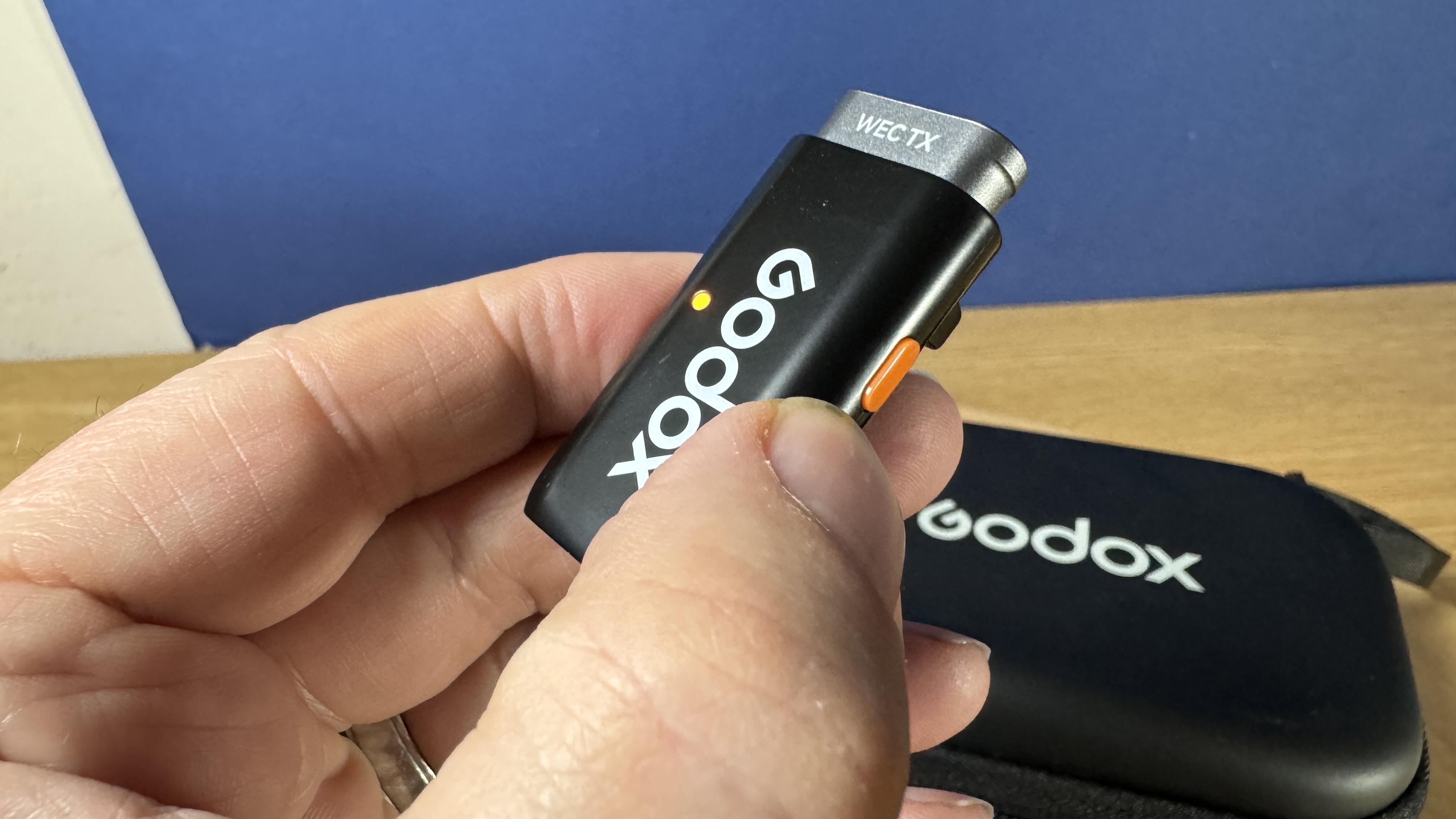
The market for wireless microphone sets is rather crowded - I’ve reviewed 10 wireless kits for Digital Camera World since 2022! Wireless mic manufacturers compete with each other by adding features such as onboard recording on transmitters and sound level displays on receivers, but these features come at a cost.
Transmitter
Dimensions: 48mmx22mmx16mm
Net Weight: 12g
Max SPL: 110db
Dynamic Range: 86db
Transmission Type: 2.4GHz Frequency Hopping System
Pick-up Pattern: Omnidirectional
USB-C Input: 5V ⎓ 160mA
Frequency Range: 20Hz-20KHz
Battery Life: Approx 8 hours
Max Distance: 200m
Receiver
Dimensions: 48mmx28mmx15mm
Net Weight: 16g
Transmission Type: 2.4GHz Frequency Hopping System
Max Distance: 200m
USB-C Input: 5V ⎓ 200mA
Battery Life: Approx 8 hours
If you’re a video content creator who wants to improve the quality of their program’s audio without blowing their budget then the Godox WEC 2-Person Kit is worth considering.
The WEC lacks the onboard recording feature and the level display indicator of the Godox Virso wireless kit (see our review) but it costs approximately half the price and does an effective job of transmitting your voice wirelessly from a distance.
If you’re a solo presenter then consider buying the cheaper Godox WEC Kit1 (single), which includes a transmitter and a receiver. We tested the more expensive WEC Kit2 (2-person kit) which has two transmitters and a receiver. These are essential if you need to appear on camera and interview another person at the same time.
The Godox WEC Kit2 consists of two transmitters and one receiver. The transmitters have built-in microphones that broadcast your voice to the receiver that is plugged into your camera or smartphone. The transmitters and receiver are stored in a carry case that doubles up as a charging dock.
The case has a useful digital display that indicates the remaining level of charge. By charging the case you charge the transmitters and receiver simultaneously so that they will perform equally during a shoot. This means the interviewee’s mic should function for the same duration as the interviewer’s (though with a transmitter and receiver battery life of 8 hours you’ll run out of questions before you run out of juice!)
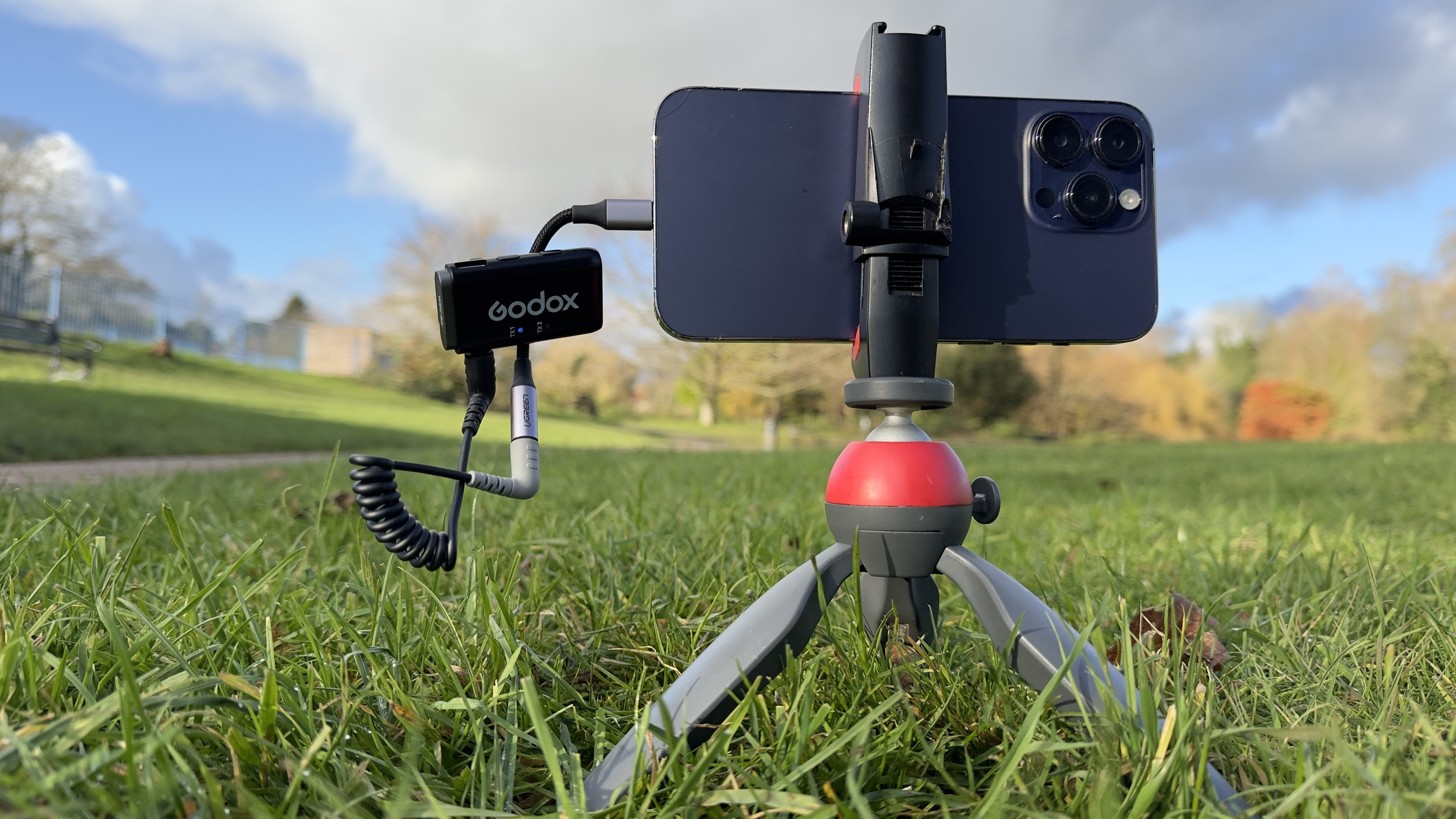
Godox WEC: Design & Handling
As this is a budget kit the plastic transmitters and receivers feel very lightweight (compared with the weightier and more solidly-built feel of a DJI Mic transmitter for example - though the DJI is more than twice the price of the WEC). Being lightweight isn’t a problem. The WEC’s 12g transmitter doesn’t cause your shirt to sag when you attach it via its built-in clip (unlike the Saramonic BlinkMe’s heftier 30g transmitter - see review).
The receiver is also lightweight (16g) so it can dangle happily via a cable from your camera or smartphone. We used the receiver’s clip to secure it to the short cable that was connecting the receiver to our iPhone. The hard plastic charging case is stored in a padded zippable box. This box also contains a pocket for accessories such as wind shields and connecting cables, so the whole WEC Kit can be transported safely to and from a shoot.
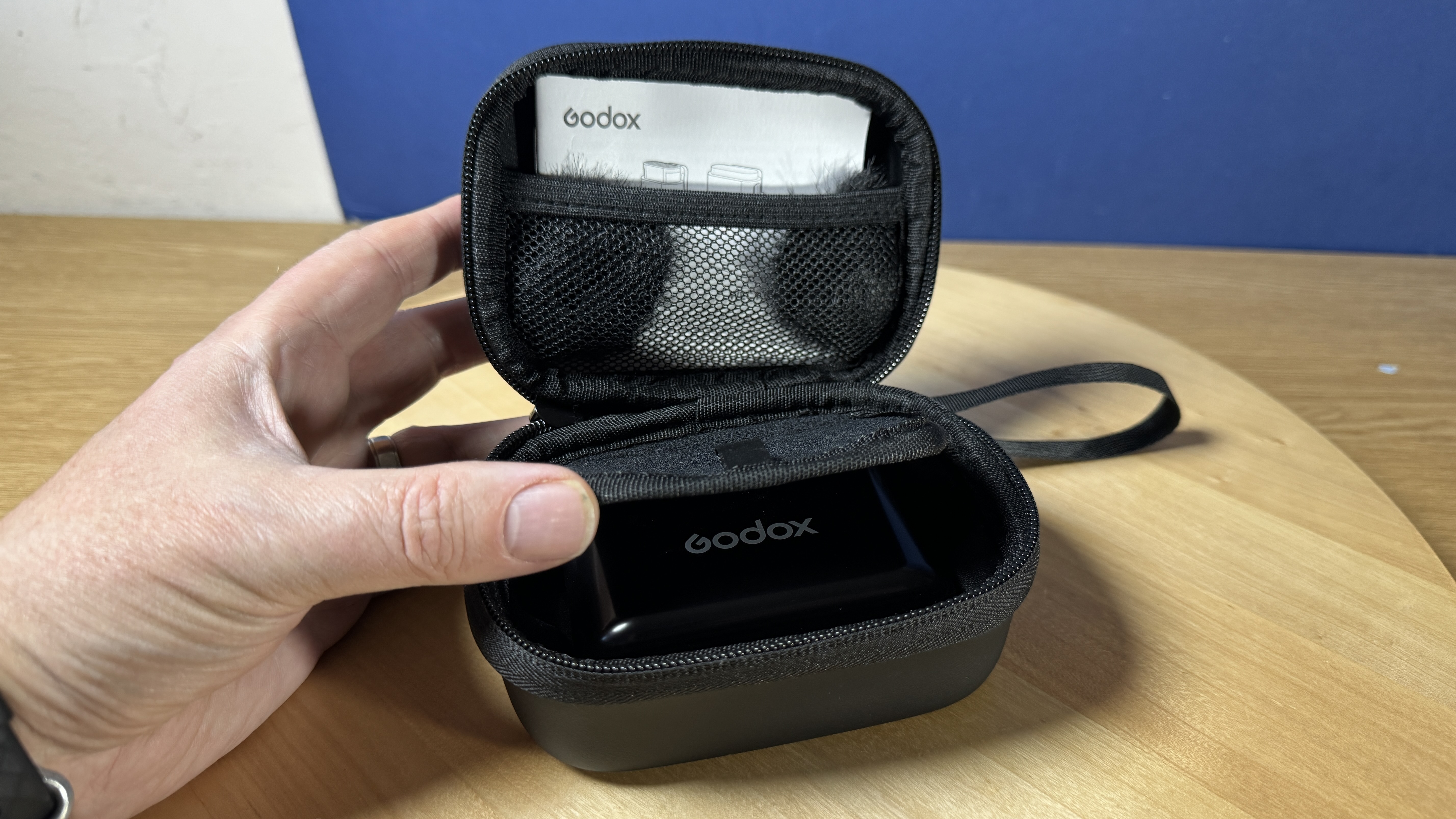
The transmitters and the receiver automatically pair when you remove them from the carry case, so you can start recording straight away without the faff of having to pair them manually.
Both transmitters in the WEC Kit2 have a noise reduction button. When pressed a green light on the transmitter changes to orange to indicate that noise reduction technology is being employed. A nice touch is that the other transmitter also switches to noise reduction mode too, so you’ll get the same audio quality from interviewer and interviewee. Tap the transmitter button again to return to standard transmission mode - indicated by a green light.
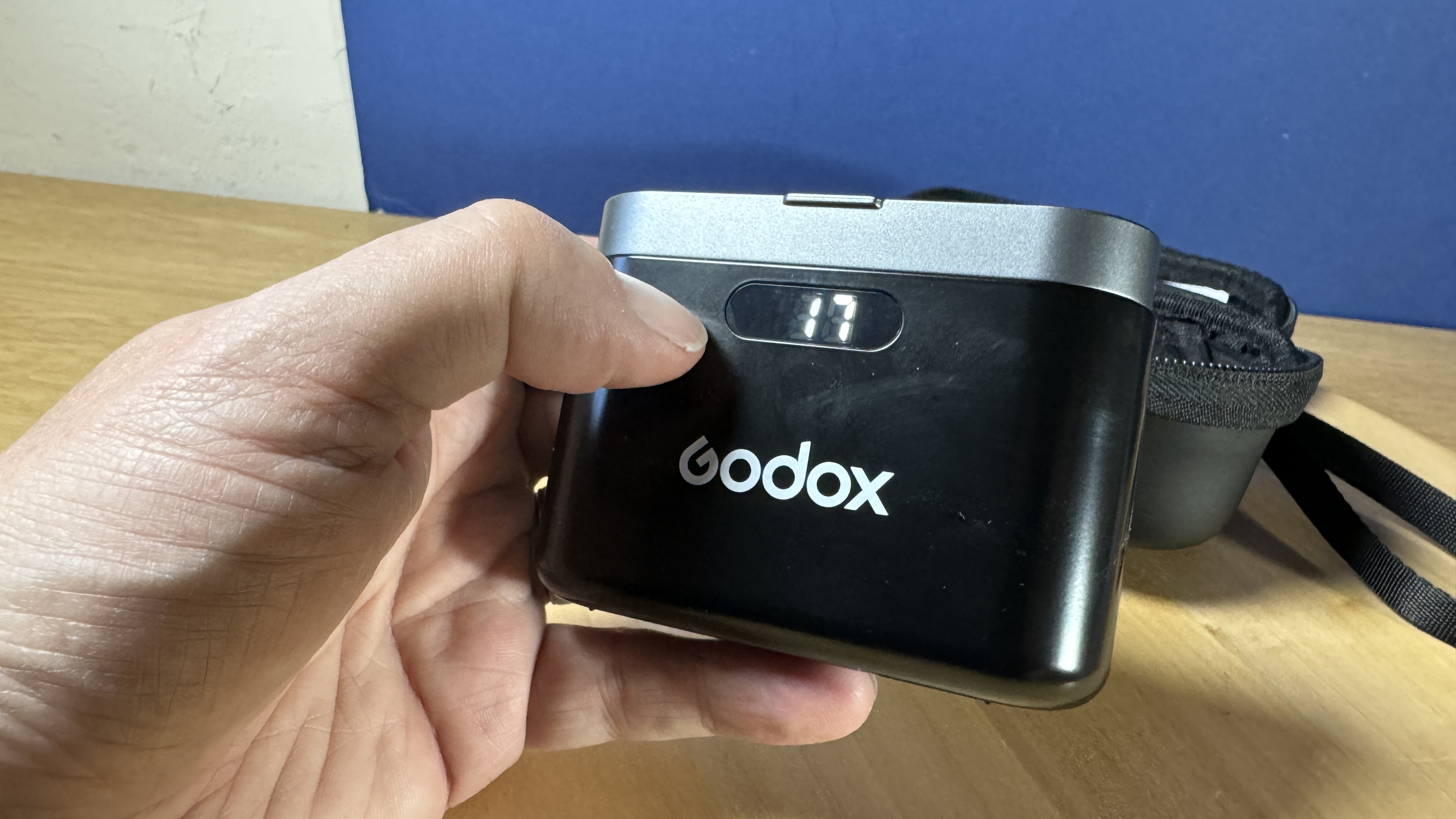
Godox WEC: Performance
To test the Godox WEC Kit2 I took it into a noisy town centre and attached the receiver to my iPhone 15 Pro Max. The kit’s supplied 3.5mm TRS-TRRS audio cable needed a third-party 3.5mm to USB C adaptor to enable me to connect the receiver to my iPhone. I used a Ugreen adaptor.
I started recording my voice as rush hour traffic whizzed by, creating a noisy environment. By tapping the transmitter’s noise reduction button the onboard software reduced the sound levels of the traffic so my voice could be heard more clearly. However, although my voice was more audible it did have a flatter and tinnier quality to it as you’ll hear from our supporting video.
You will get better results by using the transmitter’s normal recording mode to capture a fuller and bassier voice and then use post-production noise reduction tools in Final Cut Pro or Adobe Premiere Pro. This will enable you to get a compromise between reducing background noise while producing a less flat and tinny voice recording.
I then headed to the park to test the Godox WEC Kit2’s ability to transmit sound over a distance. On reaching the park my iPhone decided that the plugged-in Godox receiver was a pair of headphones and not another device, so it wouldn’t let me capture sound from the receiver. I had to head home, grab an older iPhone 14 Pro Max and a 3.5mm to lightning cable adaptor, and use that setup to complete the test. I don’t know why the iPhone 15 Pro Max suddenly stopped recognizing that a transmitter was attached and not a set of headphones, despite much Googling!
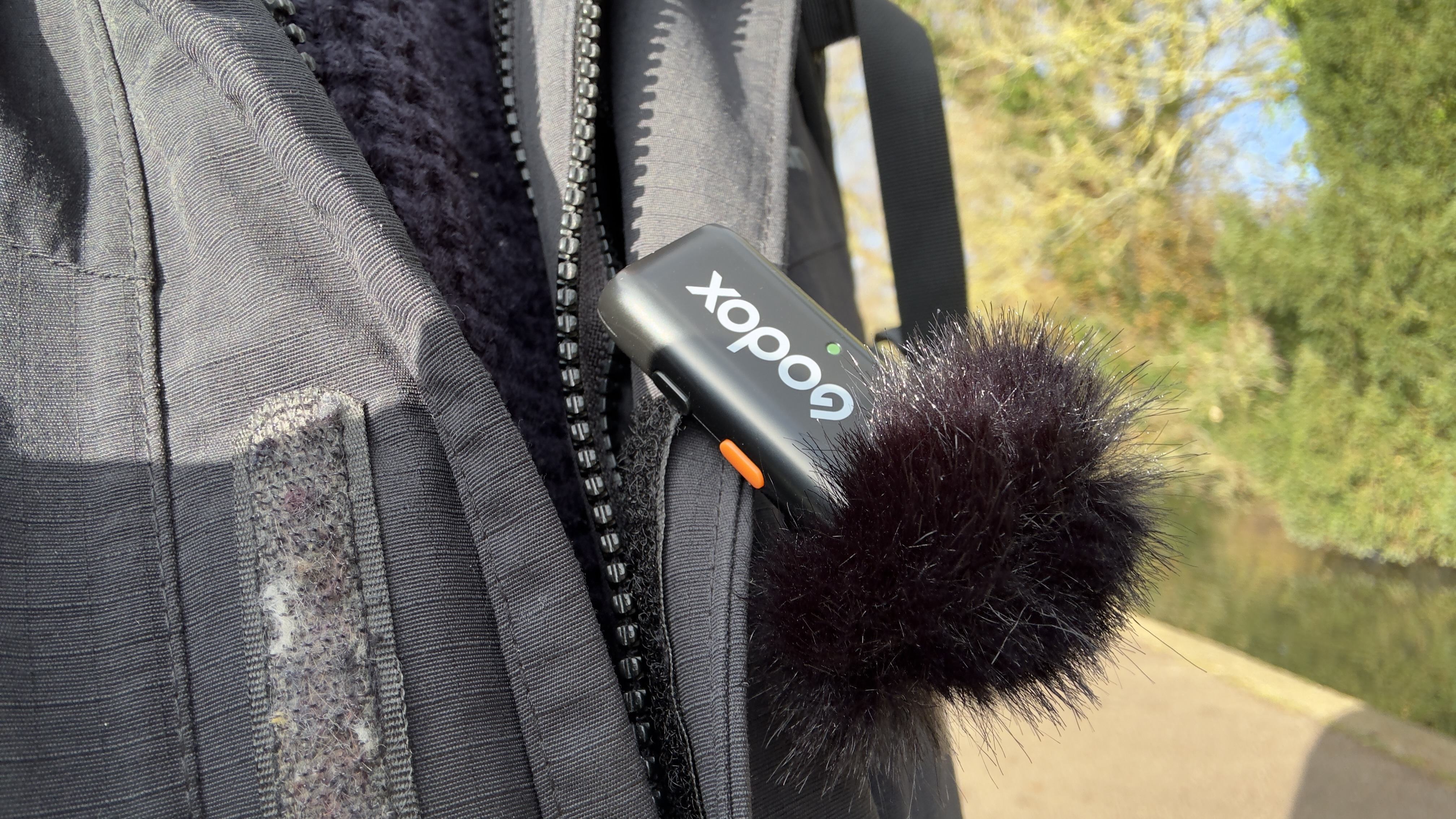
With the receiver plugged into my iPhone 14 Pro Max I then recorded my voice as I walked away from the camera. With some mics (such as the similarly priced 7Artisans DMic-S) the signal can drop out when the transmitter mic loses line of sight with the receiver. In the case of the Godox WEC the sound transmitted loud and clear, even when I turned my back to the camera at approximately 65 meters and lost line of sight. At that distance, you couldn’t see my lips move in the footage (as you’ll see from this review’s supporting video), so it's unlikely you’ll need to record from a greater distance (though Godox claims a transmission range of 200 meters).

With wireless mics, you need to look out for latency. This term refers to the delay between the subject’s lips moving and their voice being heard. Latency is quite common with wireless mic sets but it wasn’t a problem with the Godox WEC Kit2. Check out my supporting video demonstrating the mic in action.
I could shift the audio track by a frame to get mouth and sound more in sync but as I felt the latency was negligible I left things as they were recorded. I didn’t add any EQ adjustments to the audio either. All I did was tweak sound levels to make them match in different scenes. So what you hear in my supporting test video is what you get from the Godox WEC Kit2.
Godox WEC: Final Verdict
For a relatively cheap wireless mic kit, the Godox WEC Kit2 does a good job of capturing decent-quality sound from a distance. I was particularly impressed by the absence of signal dropout, even when turning my back to the camera. This reliability is just as well as there’s no backup onboard recording on the transmitter as there is with other mics (see Alternatives).
If you’re on a tight budget and want a mic kit that operates straight from the box then the WEC Kit2 is worth buying (though you’ll also need to buy a third-party adaptor to connect the receiver to a smart phone). I’d recommend this kit for video content creators who want to capture better-quality sound quickly and easily without worrying about setting sound levels and pairing mics to the receiver. However, if you want the security of onboard recording and the ability to monitor and manually adjust sound levels on the receiver then the Godox WEC kit is not for you.
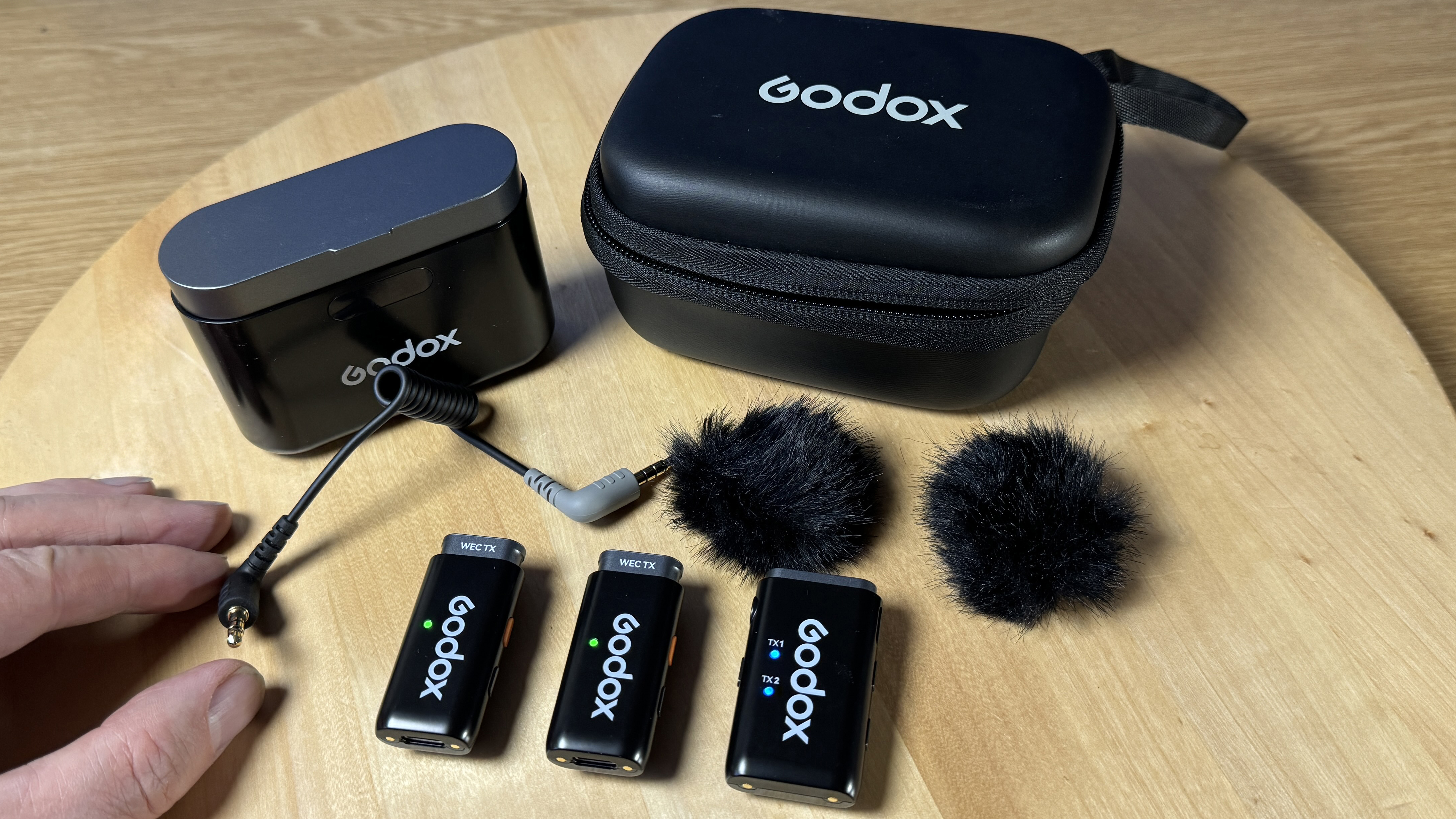
Alternatives
Professional content creators will want to be able to view and adjust sound levels manually, so will be better off going for a more expensive kit such as the Hollyland Lark Max Duo. The Max also has an onboard recording on the transmitters so you can replace signal drop-out with an uninterrupted recording. For a cheaper alternative consider the Hollyland Lark M1 kit which has similar specifications to the Godox WEC (and at a similar price).







